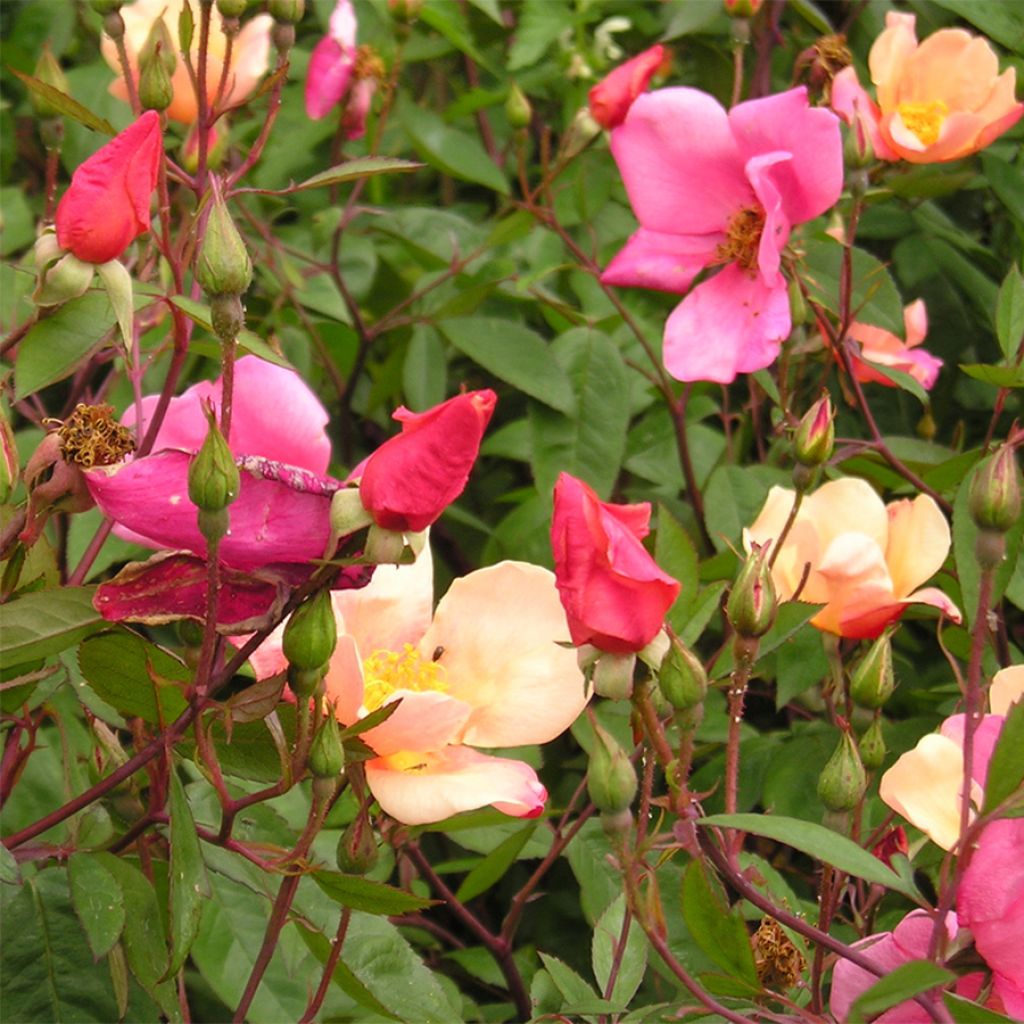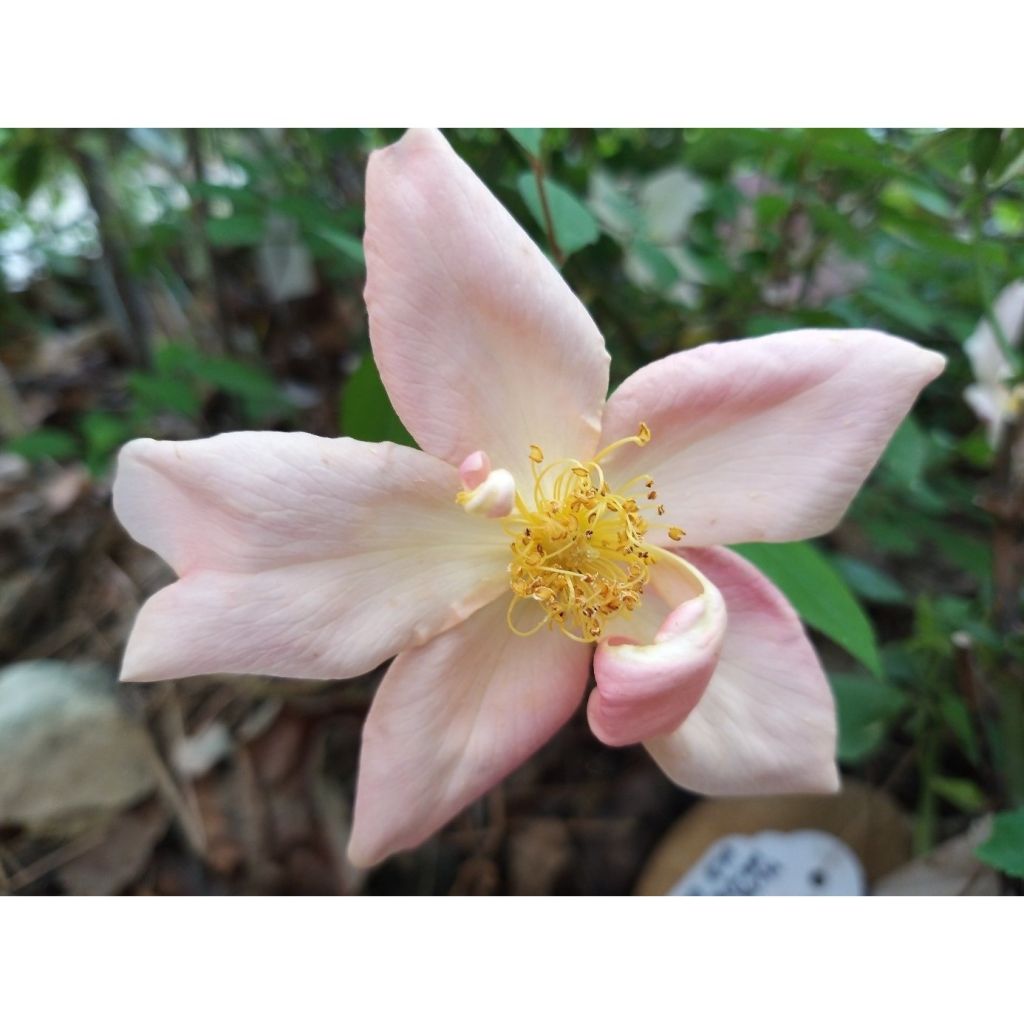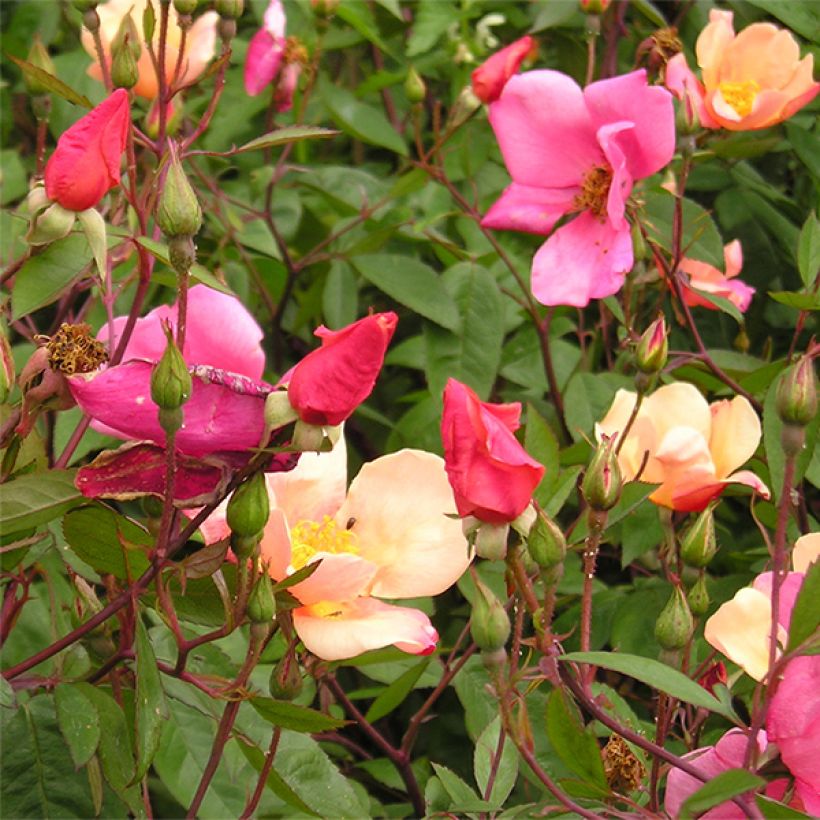

Rosa x chinensis 'Mutabilis' - China Rose


Rosa x chinensis 'Mutabilis' - China Rose


Rosa x chinensis 'Mutabilis' - China Rose
Rosa x chinensis 'Mutabilis' - China Rose
Rosa x chinensis Mutabilis
Chinese Rose, Bengal Rose, China Rose
This item cannot be shipped to the selected country
Delivery charge from €5.90
Delivery charge from €5.90
Delivery charge from €5.90
Delivery to Corse prohibited
More information
Schedule delivery date,
and select date in basket
This plant carries a 24 months recovery warranty
More information
We guarantee the quality of our plants for a full growing cycle, and will replace at our expense any plant that fails to recover under normal climatic and planting conditions.
From €5.90 for pickup delivery and €6.90 for home delivery
Express home delivery from €8.90.
From €5.90 for pickup delivery and €6.90 for home delivery
Express home delivery from €8.90.
From €5.90 for pickup delivery and €6.90 for home delivery
Express home delivery from €8.90.
Delivery to Corse prohibited: UE law prohibits the import of this plant from mainland France to Corse as part of the fight against Xylella fastidiosa. Please accept our sincere apologies.
More information

Does this plant fit my garden?
Set up your Plantfit profile →
Description
Rosa chinensis 'Mutabilis' is unforgettable for those who have seen it bloom, then re-bloom, in successive waves, repeating its paniculate light and multicoloured flowers late into the season. It owes its name 'Mutabilis' to the changing colours of its flowers, which open as yellowish chamois wildflowers, turn pink and then become tinged with crimson to coppery purple before fading. This remarkable bush is an ancient hybrid, forming a large and sturdy bush with an airy habit and light foliage, which can reach the size of a small climber in sheltered locations or the south of our country. Like all direct descendants of R. chinensis, it requires protection against heavy frost in cold climates.
The Rosa x chinensis 'Mutabilis' was named as such when it was commercialised in 1934 by the Swiss horticulturist Henry Correvon, to whom it had been given 40 years earlier by a Milanese friend who was a rose enthusiast and grew it in his garden, where it developed without a name. It is possible that this rose is identical to the variety 'Tipo Ideale'. This old hybrid of unknown origin has been cultivated in Europe since 1896 but is also found in China.
It is a slightly thorny bush with a wide and rounded habit that easily reaches 2m (7ft) in height and 1.3m (4ft) in width, with rapid growth. Depending on the climate, its foliage, evergreen to semi-evergreen, is a rather dark and satin-like green, with young shoots being bronze-purple, as are the young branches. The flowering is almost continuous, remarkably abundant in April-May, repeating in successive waves thanks to the rains. In mild climates, this rose still bears flowers at Christmas. It is covered with single, 5-petaled flowers, 6cm (2in) wide, a bit tousled, whose colour changes throughout the day. The very pointed bud, orange to red, opens up into a yellowish chamois cup with orange reverse, then the next day it turns into a coppery salmon pink and then fades a bit, finally turning into a dark pink. This succession of colours creates a delightful range of yellow, orange, and pink on the same bush. This variety, not demanding in terms of soil, grows very well on its own roots.
If the passion for botanical roses and their direct hybrids is not widespread, it is fully justified, especially in difficult soils or under challenging climates: these roses are not only the parents of our modern roses but also generally more robust and reliable. The 'Mutabilis' rose is fantastic and whimsical but little known among amateur gardeners. While its hardiness is sometimes lacking in cooler climates (-12°C/-15°C (5°F)), it deserves to be planted in the majority of gardens even by the seaside, by choosing a slightly sheltered location. It can be planted in a romantic bed or a wild hedge alongside Rosa complicata, the Hansa rose, Rosa rubiginosa (the sweetbriar rose), or Rosa rubrifolia with purple leaves. It can be used as a standalone plant, in a shrub bed, or in a free hedge in areas where summers are dry. Trained against a wall, like a climbing rose, it can reach 6m (20ft). Finally, it is a very healthy and low-maintenance bush, resistant to drought once well established.
Report an error about the product description
Rosa x chinensis 'Mutabilis' - China Rose in pictures


Plant habit
Flowering
Foliage
Botanical data
Rosa
x chinensis
Mutabilis
Rosaceae
Chinese Rose, Bengal Rose, China Rose
China
Rosa canina Laxa (Wrapped bare root, 4L/5L pot)
Other Roses A to Z
Planting and care
The 'Mutabilis' chinensis rose is an easy-to-grow plant that doesn't require a specific type of soil, as long as it's well-drained and deep enough. It can handle cold temperatures as low as -12°C/-15°C (5°F). It can grow well in limestone and poor soils, but it doesn't do well in waterlogged soils. It thrives in sunny areas and can handle drought and diseases once it's well-established. It can be grown in any garden, as long as it's cared for properly. To plant it, use well-drained soil and find a sunny or partially shaded area. It can even be planted in a shaded location, which it can handle well in hot climates. In the winter, it's a good idea to remove any dead wood, but avoid severe pruning, as this can ruin the natural shape of the bush, even though it can tolerate it pretty well.
Roses may develop unsightly spots at the end of summer, but this is a natural occurrence and doesn't harm the rose's growth.
Planting period
Intended location
Care
-
, onOrder confirmed
Reply from on Promesse de fleurs
Fragrant Roses
Haven't found what you were looking for?
Hardiness is the lowest winter temperature a plant can endure without suffering serious damage or even dying. However, hardiness is affected by location (a sheltered area, such as a patio), protection (winter cover) and soil type (hardiness is improved by well-drained soil).

Photo Sharing Terms & Conditions
In order to encourage gardeners to interact and share their experiences, Promesse de fleurs offers various media enabling content to be uploaded onto its Site - in particular via the ‘Photo sharing’ module.
The User agrees to refrain from:
- Posting any content that is illegal, prejudicial, insulting, racist, inciteful to hatred, revisionist, contrary to public decency, that infringes on privacy or on the privacy rights of third parties, in particular the publicity rights of persons and goods, intellectual property rights, or the right to privacy.
- Submitting content on behalf of a third party;
- Impersonate the identity of a third party and/or publish any personal information about a third party;
In general, the User undertakes to refrain from any unethical behaviour.
All Content (in particular text, comments, files, images, photos, videos, creative works, etc.), which may be subject to property or intellectual property rights, image or other private rights, shall remain the property of the User, subject to the limited rights granted by the terms of the licence granted by Promesse de fleurs as stated below. Users are at liberty to publish or not to publish such Content on the Site, notably via the ‘Photo Sharing’ facility, and accept that this Content shall be made public and freely accessible, notably on the Internet.
Users further acknowledge, undertake to have ,and guarantee that they hold all necessary rights and permissions to publish such material on the Site, in particular with regard to the legislation in force pertaining to any privacy, property, intellectual property, image, or contractual rights, or rights of any other nature. By publishing such Content on the Site, Users acknowledge accepting full liability as publishers of the Content within the meaning of the law, and grant Promesse de fleurs, free of charge, an inclusive, worldwide licence for the said Content for the entire duration of its publication, including all reproduction, representation, up/downloading, displaying, performing, transmission, and storage rights.
Users also grant permission for their name to be linked to the Content and accept that this link may not always be made available.
By engaging in posting material, Users consent to their Content becoming automatically accessible on the Internet, in particular on other sites and/or blogs and/or web pages of the Promesse de fleurs site, including in particular social pages and the Promesse de fleurs catalogue.
Users may secure the removal of entrusted content free of charge by issuing a simple request via our contact form.
The flowering period indicated on our website applies to countries and regions located in USDA zone 8 (France, the United Kingdom, Ireland, the Netherlands, etc.)
It will vary according to where you live:
- In zones 9 to 10 (Italy, Spain, Greece, etc.), flowering will occur about 2 to 4 weeks earlier.
- In zones 6 to 7 (Germany, Poland, Slovenia, and lower mountainous regions), flowering will be delayed by 2 to 3 weeks.
- In zone 5 (Central Europe, Scandinavia), blooming will be delayed by 3 to 5 weeks.
In temperate climates, pruning of spring-flowering shrubs (forsythia, spireas, etc.) should be done just after flowering.
Pruning of summer-flowering shrubs (Indian Lilac, Perovskia, etc.) can be done in winter or spring.
In cold regions as well as with frost-sensitive plants, avoid pruning too early when severe frosts may still occur.
The planting period indicated on our website applies to countries and regions located in USDA zone 8 (France, United Kingdom, Ireland, Netherlands).
It will vary according to where you live:
- In Mediterranean zones (Marseille, Madrid, Milan, etc.), autumn and winter are the best planting periods.
- In continental zones (Strasbourg, Munich, Vienna, etc.), delay planting by 2 to 3 weeks in spring and bring it forward by 2 to 4 weeks in autumn.
- In mountainous regions (the Alps, Pyrenees, Carpathians, etc.), it is best to plant in late spring (May-June) or late summer (August-September).
The harvesting period indicated on our website applies to countries and regions in USDA zone 8 (France, England, Ireland, the Netherlands).
In colder areas (Scandinavia, Poland, Austria...) fruit and vegetable harvests are likely to be delayed by 3-4 weeks.
In warmer areas (Italy, Spain, Greece, etc.), harvesting will probably take place earlier, depending on weather conditions.
The sowing periods indicated on our website apply to countries and regions within USDA Zone 8 (France, UK, Ireland, Netherlands).
In colder areas (Scandinavia, Poland, Austria...), delay any outdoor sowing by 3-4 weeks, or sow under glass.
In warmer climes (Italy, Spain, Greece, etc.), bring outdoor sowing forward by a few weeks.













































